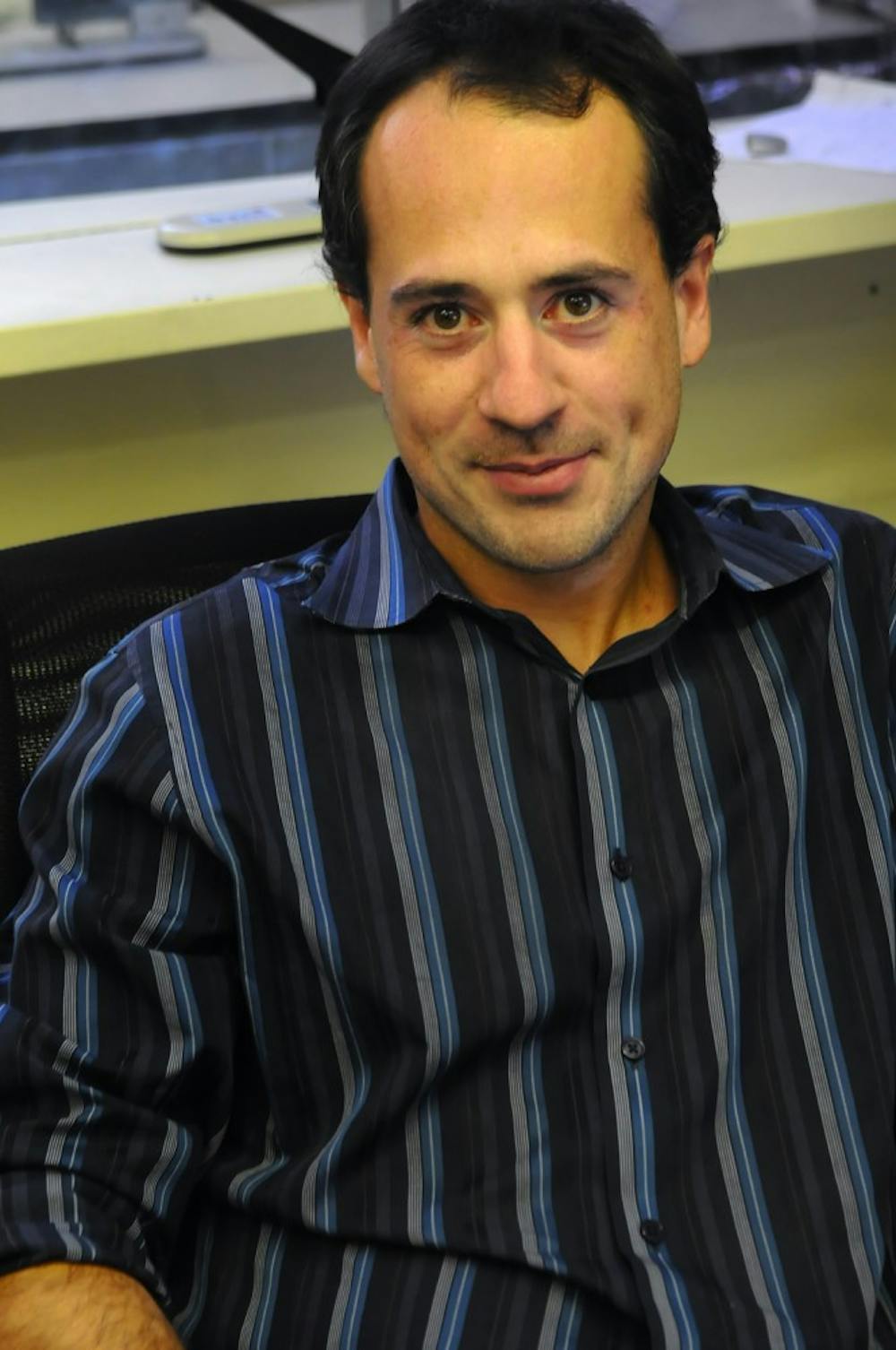
Seated comfortably at his desk in the Towne Building, Paulo Arratia turns over a cylindrical container filled with oil. Bubbles soon begin floating to the top.
As far as Arratia — an assistant professor of Mechanical Engineering and Applied Mechanics — sees it, this simple motion is a fair introduction to his research on fluid flow and motion, which earned him a CAREER award from the National Science Foundation this spring. And as far as Penn Engineering is concerned, it’s also an introduction to the upward motion that the entire school is witnessing.
The School of Engineering and Applied Science is coming off an eventful summer, during which faculty from various fields and levels of seniority received over $60 million in grants, according to SEAS Dean Eduardo Glandt.
That momentum has continued into the school year, with company interest in recruiting SEAS graduates mounting to the point where the department is holding its September 16 Career Day at the Sheraton University City Hotel. Traditionally, the event has been held at a smaller location in Towne.
One key element of the department’s development is younger researchers like Arratia, whose work demonstrates what Provost Vince Price called an “intellectual vitality” widespread among junior faculty members.
Arratia’s enthusiasm is evident, as he stresses the elegance and practical application of different concepts tackled in his lab.
Studies on interfacial phenomena, for example, show how the flow of a drop of water can naturally create beautiful, predictable shapes, while his work on blood flow relates to nanodevices that can be used for biomedical purposes.
The study of swimming motions for a particular worm, and what these motions can teach researchers about muscular dystrophy in humans, is what earned Arratia the $400,000 CAREER award.
Alejandro Ribeiro, assistant professor of Electrical and Systems Engineering, also received a CAREER award last spring, but for a different focus: wireless networks.
His lab aims to determine essential properties of reliable networks and translate these properties into design. The clinching feature of his award-winning proposal, he explained, was the idea “to exploit structures introduced by randomness” in wireless networks.
Networks also play a part in the research of Shu Yang, associate professor of Materials Science and Engineering, who studies surfaces to develop smart materials, or synthetics that respond actively to their environment.
The applications range from self-cleaning materials that mimic properties in natural textures like lotus leaves, to technology with implications for regenerative medicine, to conceptual connections between optical fibers and online networks.
Outside these fields of research and the accompanying teaching, all three faculty members engage with broader academic community of SEAS in interdisciplinary ways. Yang is co-chair for the international Materials Research Society’s fall conference. Arratia helps run a junior-level fluid mechanics lab at Penn, and Ribeiro will be involved in the new SEAS undergraduate Singh Program in Market and Social Systems Engineering, set to begin next fall.
Arratia believes that the school’s collaborative spirit reflects a generally supportive vibe. “There is a very, very positive energy about engineering at this school,” he said.
The Daily Pennsylvanian is an independent, student-run newspaper. Please consider making a donation to support the coverage that shapes the University. Your generosity ensures a future of strong journalism at Penn.
DonatePlease note All comments are eligible for publication in The Daily Pennsylvanian.




